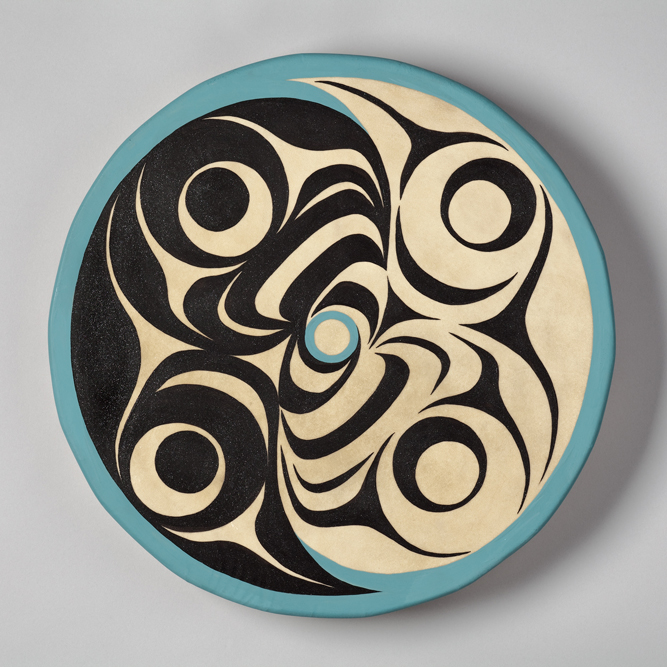Acrylic on Hide
Eagle Nest Drum
Artist/Curatorial Statement
Coming from the K’omoks First Nation is very interesting. Our language is a Salishan language and anthropologists, in turn, classify us as Coast Salish. History, however, has ensured that alliances have tied us more closely with the Kwakwaka’wakw people to the north. To many Salish, we are seen as Kwakwaka’wakw and to many Kwakwaka’wakw, we are seen as Salish. Eagle Nest encapsulates a lot of feelings around this. For many First Nations living today, we are faced with living in a dual world: at once traditional and at the same time contemporary. For those of us who are K’omoks, we take this one step further and balance our traditional lives with being both Salish and Kwakwaka’wakw.
While I know of no traditional K’omoks spindle whorls in museum collections, it does not preclude their existence. It is likely, in fact, that we used them like our other Salish relatives. By the mid-1900s, my great-grandmother would simply spin wool on her lap with her bare hands. Whenever I draw a spindle whorl design, I think about her and the knowledge she passed onto my mother.
Eagle Nest not only brings attention to the duality of our lives as K’omoks people, I also wanted to bring in a personal element. In 2002, my daughter Claire was born. With blond hair, blue eyes and light complexion harkening back to our Scandinavian roots, she became the little white eagle in our nest. In 2005, Matthew balanced out that nest. He was born with dark brown hair, brown eyes and darker complexion.
They laugh and play, cry and fight and they bring balance into our lives.
Andy Everson

